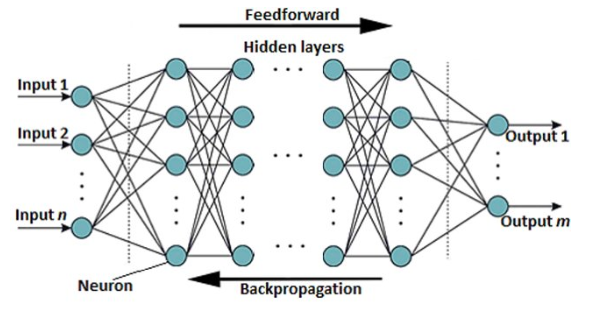A Layman's Guide to Understanding Deep Learning
As technology advances, we often hear terms like 'Artificial Intelligence,' 'Machine Learning,' and 'Deep Learning' thrown around in discussions. While these words might seem daunting for a layperson, fear not! This post aims to demystify deep learning, breaking it down in an easily digestible way for everyone.
At its core, deep learning is a specialized branch of machine learning, a subset of artificial intelligence (AI). AI involves machines that mimic 'cognitive' functions that humans associate with the human mind, like 'learning' and 'problem-solving.' Machine learning takes this a step further, involving computers that learn and adapt their processes without being explicitly programmed.
Deep learning, then, you might ask? Well, it goes a step deeper. Deep learning models are computational models that are designed to mimic our brain's structure and function, learning from vast amounts of data. It uses neural networks- essentially layers of interconnected 'nodes' or 'artificial neurons' that loosely mirror the neural networks in a human brain. You can envision this network as a multi-tiered filtration system where raw data is input at one end, and refined information is extracted at the other. For instance, if we input an image into a deep learning model, the early layers of the model might learn to recognize simple elements like edges and shapes, and as the data progresses through the network, later layers might learn to identify complex features like textures, colors, and finally, the object itself. The term 'deep' in deep learning indicates the network's depth or number of layers. Many of these layers allow the model to identify intricate patterns in vast data sets. This trait makes deep learning models powerful and efficient at tasks like image and speech recognition, natural language processing, and gaming. Deep learning models need to be trained with a lot of data. This is akin to teaching a child to identify an apple by showing them many pictures of apples. The model then makes predictions based on the input data, and we measure its performance using what's known as a 'loss function.' The lower the loss, the better our model is performing. An optimization process called 'backpropagation' helps minimize this loss, adjusting the model's internal parameters to enhance its accuracy.

Deep learning has already left an indelible mark in numerous fields, showing remarkable results and paving the way for future advancements. One of the most widely recognized applications of deep learning is in powering voice recognition systems, such as the one used by Google's search engine. The AI behind this function can discern individual words and phrases, learn from their errors, and enhance its accuracy over time. This system can understand different languages, accents, and speech patterns, making it an essential tool for facilitating communication and information retrieval in the digital age. Another special implementation of deep learning is Facebook's photo tagging system. By analyzing billions of images, the deep learning model is trained to identify specific individuals based on features like facial structure, hair color, eye shape, and more. This technology not only streamlines the photo tagging process but also enhances security and personalizes user experience on the platform. Furthermore, deep learning is the driving force behind the development of self-driving cars. These autonomous vehicles leverage deep learning algorithms to perceive their surroundings, make sense of their environment, and make decisions. This involves complex processes such as identifying objects, predicting their movements, planning a path, and executing maneuvers in real time. The continuous improvements in this field hold great promise for increasing road safety and revolutionizing transportation. The potential of deep learning also extends into the healthcare industry. It plays an increasingly pivotal role in disease diagnosis by analyzing medical images, identifying patterns in patient records, and even predicting disease progression. From detecting tumors in radiology scans to predicting the likelihood of heart disease, deep learning is poised to make healthcare more accurate, predictive, and personalized. In the finance industry, deep learning is being harnessed for fraud detection. Traditional methods of detecting fraudulent transactions often involve manual intervention and rule-based systems. However, deep learning can help sift through millions of transactions in real-time, identify suspicious patterns, and flag potential fraudulent activities with accuracy far exceeding manual methods. Moreover, deep learning is also being used in areas like climate modeling, where it helps predict weather patterns, understand climate change, and aid in disaster management. It's also used in art and creativity, where AI can generate music, write stories, and produce visual art.
In summary, deep learning is an exciting and rapidly growing field within AI that replicates the workings of the human brain to teach machines how to learn and make decisions. Despite its complexity, it's a concept driving some of the most innovative and transformative applications we see in technology today.
By unpacking and understanding these concepts, we can better appreciate the sophisticated technology that powers much of our digital world. And remember - every expert was once a beginner. Here's to your journey in understanding the fascinating world of deep learning!
[1] Abueidda, D. W., Lu, Q., & Koric, S. (2020). Deep learning collocation method for solid mechanics: Linear elasticity, hyperelasticity, and plasticity as examples. arXiv e-prints, arXiv-2012

@Buy2cbonline.com - buy 2cb 3cmc 2fdck apvp eutylone coke mdphp
Buy2cbonline.com - @Buy2cbonline.com/shop/ | your #1 source for top quality premium RC's research chemicals like 2cb powder 2fdck (2-FDCK) 3cmc crystal meth 4mmc eutylone mephedrone ketamine Ephedrine hcl powder A-pvp etizolam bromazolam alprazolam powder Mdphp freebase Coke and more .
Buy Crystal Meth online | Order Crystal Meth online | Crystal Meth price per gram Canada USA AUS | Buy Cheap Crystal Meth online AUS Canada USA Europe, can I buy crystal meth online?
https://buy2cbonline.com/product/buy-crystal-meth-online/
Buy Mdphp Freebase online | Order Mdphp Freebase online Monkey Dust Mdphp freebase for sale https://buy2cbonline.com/product/order-monkey-dust-online-mdphp/
Buy Ketamine online | Order Ketamine online Australia | ketamine Price per gram https://buy2cbonline.com/product/buy-ketamine-online/
Buy 5f-mdmb-2201 online - https://buy2cbonline.com/product/5f-mdmb-2201-for-sale-online/
Buy JWH-018 online | Order JWH-018 online | JWH-018 Price per gram - https://buy2cbonline.com/product/buy-jwh-018-online/
Buy Cocaine online AUS | Order Cocaine online Australia | Cocaine price per gram Australia
https://buy2cbonline.com/product/buy-fish-scale-cocaine-online-fast/
Do you want to buy 2FDCK online? 2-fdck for sale 2fdck buy usa canada Australia uk | 2fdck for sale Buy 2fdck online | Order 2fdck online AUS canada UK | 2fdck price per gram 2fdck for sale | buy 2fdck usa buy 2fdck usa https://buy2cbonline.com/product/2-fdck-for-sale/
Buy Ephedrine hcl online | Order Ephedrine hcl online AUS Ephedrine hcl price per gram AUS
https://buy2cbonline.com/product/buy-ephedrine-online-hcl-powder/
Buy Alpha-pvp online | Order Apvp online | Apvp Price per gram AUS canada USA | Apvp price per kg in Australia https://buy2cbonline.com/product/buy-a-pvp-online-usa/
Buy Clonazolam online - https://buy2cbonline.com/product/buy-clonazolam-powder-online/
Buy 2C-I powder online - https://buy2cbonline.com/product/2c-i-powder-for-sale-online-safely/
Buy Bromazolam powder online | Order Bromazolam online AUS | Bromazolam Price per gram https://buy2cbonline.com/product/buy-bromazolam-powder-online/
Buy 2CB powder online | Order 2CB powder online | 2CB price per gram Australia canada USA Europe- https://buy2cbonline.com/product/buy-2cb-powder-online/
Buy Mephedrone online | Buy 4mmc online | Buy 4mmc Mephedrone Meow online | 4mmc Mephedrone price per gram | Where to buy Mephedrone 4mmc online ?
https://buy2cbonline.com/product/buy-mephedrone-online-4mmc/
Buy Alprazolam powder online Order Alprazolam Powder Online | Alprazolam Powder Price per gram in Australia Buy Cheap Alprazolam Powder Online https://buy2cbonline.com/product/alprazolam-powder/
Buy protonitazene online | Order Protonitazene Online https://buy2cbonline.com/product/hydrochloride-protonitazene-for-sale/
Buy 3CMC crystal online Order 3CMC online | 3CMC price per gram |Buy Cheap 3CMC online| https://buy2cbonline.com/product/buy-3cmc-crystal-3-cmc-online/
Order eutylone online , eutylone crystal for sale, best price eutylone, eutylone supplier, order eutylone Europe, buy eutylone online eu uae usa
https://buy2cbonline.com/product/eutylone-eutylone-crystal/
Buy 5cladba 5cl online | Order 5cladba 5cl Online in Australia - https://buy2cbonline.com/product/buy-5cladba-safely-online/
Buy Alprazolam Powder Online|Order Alprazolam Powder Online | Alprazolam Powder price per kg Apvp @buy2cbonline.com
Threema: 3F3YDZMD
Telegram: @DHlabo
https://t.me/MdphpFreebaseEurope
WhatsApp: +44 7507412275